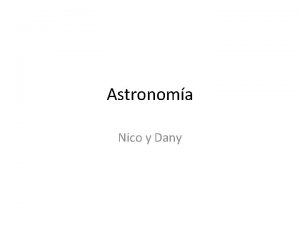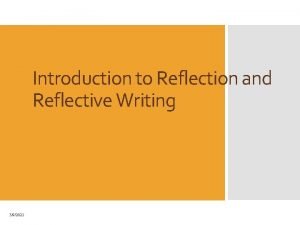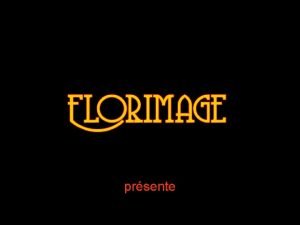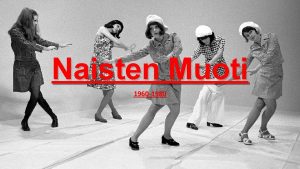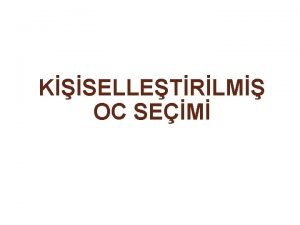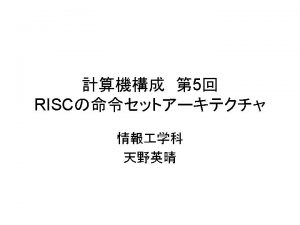edit 1960 s edit 1970 s edit 1980

![• • • [edit] 1960 s [edit] 1970 s [edit] 1980 s [edit] • • • [edit] 1960 s [edit] 1970 s [edit] 1980 s [edit]](https://slidetodoc.com/presentation_image_h2/99cba67a4b98101b7a801bf563c86c47/image-2.jpg)










- Slides: 12

![edit 1960 s edit 1970 s edit 1980 s edit • • • [edit] 1960 s [edit] 1970 s [edit] 1980 s [edit]](https://slidetodoc.com/presentation_image_h2/99cba67a4b98101b7a801bf563c86c47/image-2.jpg)
• • • [edit] 1960 s [edit] 1970 s [edit] 1980 s [edit] 1990 s [edit] 2000 s

• Acrylic paint is fast drying paint containing pigment suspension in acrylic polymer emulsion. Acrylic paints can be diluted with water, but become water-resistant when dry. Depending on how much the paint is diluted (with water) or modified with acrylic gels, media, or pastes, the finished acrylic painting can resemble a watercolor or an oil painting, or have its own unique characteristics not attainable with other media. The main practical difference between most acrylics and oil paints is the inherent drying time. Oils allow for more time to blend colors and apply even glazes over underpaintings. This slow drying aspect of oil can be seen as an advantage for certain techniques, but in other regards it impedes the artist trying to work quickly.

• Style is used in two senses: It can refer to the distinctive visual elements, techniques and methods that typify an individual artist's work. It can also refer to the movement or school that an artist is associated with. This can stem from an actual group that the artist was consciously involved with or it can be a category in which art historians have placed the painter. The word 'style' in the latter sense has fallen out of favor in academic discussions about contemporary painting, though it continues to be used in popular contexts. Such movements or classifications include the following:

• Modernism describes both a set of cultural tendencies and an array of associated cultural movements, originally arising from wide-scale and far-reaching changes to Western society in the late 19 th century and early 20 th century. Modernism was a revolt against the conservative values of realism. [15][16] The term encompasses the activities and output of those who felt the "traditional" forms of art, architecture, literature, religious faith, social organization and daily life were becoming outdated in the new economic, social and political conditions of an emerging fully industrialized world. A salient characteristic of modernism is self-consciousness. This often led to experiments with form, and work that draws attention to the processes and materials used (and to the further tendency of abstraction). [17]

• Impressionism • The first example of modernism in painting was impressionism, a school of painting that initially focused on work done, not in studios, but outdoors (en plein air). Impressionist paintings demonstrated that human beings do not see objects, but instead see light itself. The school gathered adherents despite internal divisions among its leading practitioners, and became increasingly influential. Initially rejected from the most important commercial show of the time, the government-sponsored Paris Salon, the Impressionists organized yearly group exhibitions in commercial venues during the 1870 s and 1880 s, timing them to coincide with the official Salon. A significant event of 1863 was the Salon des Refusés, created by Emperor Napoleon III to display all of the paintings rejected by the Paris Salon. While most were in standard styles, but by inferior artists, the work of Manet attracted tremendous attention, and opened commercial doors to the movement.

• • Abstract styles Abstract painting uses a visual language of form, color and line to create a composition which may exist with a degree of independence from visual references in the world. [18] Abstract expressionism was an American post. World War II art movement which had a combination of the emotional intensity and self-denial of the German Expressionists with the antifigurative aesthetic of the European abstract schools such as Futurism, the Bauhaus and Synthetic Cubism and the image of being rebellious, anarchic, highly idiosyncratic and, some feel, nihilistic. [19] Action painting, sometimes called "gestural abstraction", is a style of painting in which paint is spontaneously dribbled, splashed or smeared onto the canvas, rather than being carefully applied. [20] The resulting work often emphasizes the physical act of painting itself as an essential aspect of the finished work or concern of its artist. The style was widespread from the 1940 s until the early 1960 s, and is closely associated with abstract expressionism (some critics have used the terms "action painting" and "abstract expressionism" interchangeably). Other modernist styles include:

• Photorealism is the genre of painting based on using the camera and photographs to gather information and then from this information, creating a painting that appears to be very realistic like a photograph. The term is primarily applied to paintings from the United States art movement that began in the late 1960 s and early 1970 s. As a full-fledged art movement, Photorealism evolved from Pop Art[22][23][24] and as a counter to Abstract Expressionism. • Hyperrealism is a genre of painting and sculpture resembling a highresolution photograph. Hyperrealism is a fully fledged school of art and can be considered an advancement of Photorealism by the methods used to create the resulting paintings or sculptures. The term is primarily applied to an independent art movement and art style in the United States and Europe that has developed since the early 2000 s. [25]

• Surrealism is a cultural movement that began in the early 1920 s, and is best known for the visual artworks and writings of the group members. Surrealist artworks feature the element of surprise, unexpected juxtapositions and non sequitur; however, many Surrealist artists and writers regard their work as an expression of the philosophical movement first and foremost, with the works being an artifact. Leader André Breton was explicit in his assertion that Surrealism was above all a revolutionary movement. • Surrealism developed out of the Dada activities of World War I and the most important center of the movement was Paris. From the 1920 s onward, the movement spread around the globe, eventually affecting the visual arts, literature, film and music of many countries and languages, as well as political thought and practice, philosophy and social theory.

http: //en. wikipedia. org/wiki/Painting • • • Art Deco Baroque Body Painting Co. Br. A Constructivism Digital painting Fauvism Figuration Libre Folk Futurism Graffiti • • • Hard-edge Lyrical Abstraction Mannerism Minimalism Miniature Naïve art Neo-classicism Op Art Orientalism Orphism Painterly Pinstriping


• • • Classical realism Relational art Street art Stuckism Superflat Videogame art Superstroke VJ art Virtual art
 1980 1990 2000 2010 2020
1980 1990 2000 2010 2020 1960 sonrası eser veren yazarlar
1960 sonrası eser veren yazarlar Hard edit vs soft edit
Hard edit vs soft edit Cometa de 1970
Cometa de 1970 Reflection what so what now what
Reflection what so what now what Les poppys 1970
Les poppys 1970 Jacob s kounin
Jacob s kounin Find multiplicative inverse of 550 in gf(1759)
Find multiplicative inverse of 550 in gf(1759) Abraham maslow (1908-1970)
Abraham maslow (1908-1970) Norka peralta biografia
Norka peralta biografia Period of activism 1970 to 1972 important key points
Period of activism 1970 to 1972 important key points Tajfel 1970
Tajfel 1970 Uu no. 1 tahun 1970 doc
Uu no. 1 tahun 1970 doc



